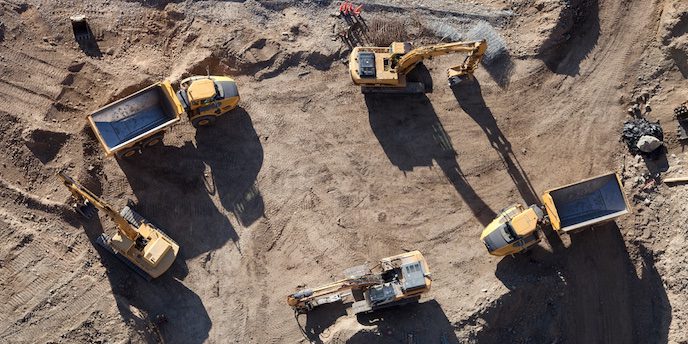

Vehicle telematics combines telecommunications, informatics, and vehicular technologies to create a vehicle telematics system that collects data. It provides insight from vehicle telematics data and improves the productivity and safety of your entire fleet of vehicles.
Telematics refers to telecommunications and information, and telematics started gaining traction in the United States back in the 1970s, commonly referred to as the crossing of information technology and telecommunications.
Telematics has since taken off more recently with the rise of the internet and a spike in the number of telecommunications networks that can transfer data in real-time for various purposes – which includes fleet management.
By implementing telematics on your fleet and using software to leverage the gathered data, you can streamline your processes, making them more efficient and effective while simultaneously increasing the value of your vehicles.
A vehicle telematics system includes vehicle telematics devices that track devices installed directly onto vehicles that facilitate the transmission and storage of data via wireless networks and the vehicle’s onboard modem and diagnostics. Telecommunications companies manage the transmission of information from the vehicle and telematics provider to computers or mobile devices that drivers and fleet telematics managers can access.
Vehicle telematics providers – such as Trackunit – typically offer a combination of IoT telematics solutions, hardware, and software solutions. This includes GPS asset tracking, telematics sensors, fleet management software, a streamlined and convenient dashboard with visualizations, registering possibilities, and notifications that are automated and configurable with alerts and warnings.
A vehicle’s location is given to a telematics device through GPS tracking. The data is then transferred from the vehicle to a server via a wireless network.
A telecommunications company handles the flow of information from the vehicle and telematics provider. The data is transferred from the telematics provider to a computer or portable device that the fleet manager can access, thanks to the internet.

Telematics solutions can be incorporated with current applications and systems to enable an array of use cases for fleets of every size, including:
Vehicle tracking
Vehicles can be tracked using a combination of GPS satellites and receivers or cloud computing. A GPS receiver downloads information from GPS satellites and processes it for use with applications such as driver GPS navigation systems. Also, it can transmit that particular data to web servers used by office staff, who can use this knowledge to dispatch the nearest driver to a new task.
Equipment and asset tracking
Fleets can attach GPS trackers to equipment and other essential assets to ensure they do not go missing and use them the most optimally. It is also possible to set up a system that immediately alerts a manager’s handheld device if a piece of equipment or another asset is moved without proper authorization.
Maintenance advancements
Vehicle maintenance and overall asset lifecycle management can be enhanced by using fleet telematics to track hours-of-use records, plan preventative maintenance and help keep tabs on warranty recovery, engine hours, and service records tracking. Fleet managers can reduce expenses and keep vehicles in safe working conditions by preparing engine diagnostics in advance.

There are several ways fleet managers can benefit from integrating a vehicle telematics system into their fleet. Here are a few of them:
Tracking
Vehicle tracking offers organizations visibility into the locations of their vehicles by monitoring the movement or places of a vehicle through GPS. This is one of the most typical vehicle telematics applications and is specifically beneficial for companies that need to keep track of a large fleet of vehicles. This attribute is also used to track both powered and unpowered assets, like various types of equipment.
Preventive maintenance
Most vehicle telematics systems are plugged directly into a vehicle’s diagnostic port, which automatically extracts engine data for fleet management managers to easily access, like fuel consumption, coolant temperature, or engine load. This is also a great way for fleet managers to set up a regular maintenance plan. Vehicle telematics providers can identify vehicle defects so fleet managers know when to bring a vehicle into the workshop.
Safety
As vehicle telematics systems scan and collect data on vehicles, they can also be a great method to gain valuable insights into driving habits. Fleet managers can develop training programs or coaching sessions based on telematics data – such as harsh braking or acceleration – to increase driver safety on the road and on the construction site.
Reduced costs
Telematics can efficiently reduce fuel costs across your entire fleet by recognizing trends in driver behavior and route performance – these are insights that can lead to significant increases in fuel efficiency. Coaching drivers on fuel efficiency can be challenging without visibility into how drivers perform. Particular telematics systems can also link fleet managers with drivers in real-time through messages so drivers can reroute in case of heavy traffic or other unexpected road delays.
Vehicle telematics works by simply installing a device with a SIM card that allows remotely acquiring vehicle information like location, speed, tire pressure, and engine idle in real-time, faster and more accurately than ever before.
Some insurance companies already use these devices to help the insured save on their policies to reward good driving behaviors. However, in the business world, many companies use telematics for locating and safe-keeping their fleet vehicles while they are on the road.
IoV – or the Internet of Vehicles – is the next phase in evolving vehicles in the automotive industry. With sensors that gather data from the vehicle, the surroundings, the behavior of the driver – and possibly even data from other vehicles, new possibilities and opportunities like better routing and navigation, traffic management, and control of air pollution are approaching.
Information and data are the keys to adapting your business to new opportunities that arise. Telematics evolves quickly and is now a substantial competitive differentiator. By leveraging our history of designing, building, and implementing telematics, we work with you to reimagine your business in a digital world. Learn more with Trackunit Predict.
Today, telematics delivers considerable productivity gains for OEMs and decreases their customers’ total cost of ownership. There are continuous growth opportunities when linking OEMs, rentals, dealers, and contractors. Connectivity allows you to put data-driven analysis in every customer’s pocket, empowering them to make the correct decisions at the right time. If you want to learn more about telematics for vehicles, contact Trackunit here.
Ne manquez plus aucune information. Nous vous enverrons un e-mail lorsque de nouveaux articles seront publiés sur ce sujet.